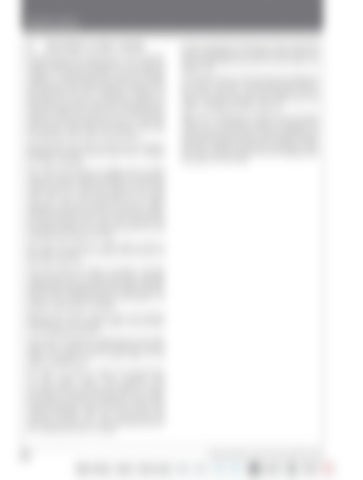Hydraulics B)
FUNCTIONING OF DRAFT CONTROL
By positioning the control lever (1) for position control against the backstop (E), the crank (4) reaches its maximum position of anti-clockwise rotation. In said position the roller (5) is totally lowered from the inclined plane of position cam (6) allowing the anti- clockwise rotation of flywheel (7) as well as the clockwise rotation of the transmission lever (9) that is pushed by the spring of shaft (21) which in turn will position itself for the discharge position (S). In this way the position levers will not interfere with the functioning of the draft control levers. By positioning the draft control lever (2) against backstop (F), draft control shaft (16) is caused to rotate clockwise.
In fact, during the initial part of the movement toward backstop (E), of draft control lever (2) the corresponding lowering of the arms does not happen yet. The traction force on the top link point (20) acts on tension rod (18) in the direction indicated by the arrow "positive" causing flywheel (19) to rotate clockwise together with draft cam (12) which is fastened to the same pin. When the inclined plane of draft cam (12) meets roller (11), a clockwise rotation of flywheel (7) is achieved this by means of shock absorber (8) will cause transmission lever (9) to rotate counterclockwise thereby moving the distributor shaft (21) into neutral position (N) and stopping the movement of the arms.
The crank (15) being an integral part of shaft (16), will reach its extreme position of clockwise rotation, and by means of tension rod (17) will move roller (11), the latter acting on the draft cam (12). This causes flywheel (7) to rotate clockwise which by means of function shock absorber (8) produces the anti-clockwise rotation of transmission lever (9) thus setting the distributor shaft (21) in delivery position (C) and consequently lifting the arms. The arms will come to a stop only as soon as the piston comes into contact with the pin of the limit stop (22). This limit stop, by means of tension rod (23) causes lever (9) to rotate clockwise, thereby compressing the spring of friction shock absorber (8) and thus releasing shaft (21) which now can move to the neutral position (N) where it is pushed outward by its spring. Moving the draft control lever (2) toward backstop (E), the leverage system will function in the following manner: The crank (15), being an integral part of the draft shaft (16), rotates counter-clockwise and by means of tension rod (17) causes roller (11) to slide on flywheel (7). The roller (11), when it meets the inclined plane of the draft cam (12), permits the counterclockwise rotation of flywheel (7) which by means of shock absorber (8) will rotate transmission lever (9) in a clockwise manner thus leaving distributor shaft (21) free to move into neutral position (N) and continuing the movement of lever (2), in the discharge position (S), causing the arms to lower.
I-10
35 Series 4WD, Model - 3535, 4035, 4535 and 5035 SM June’08




















































